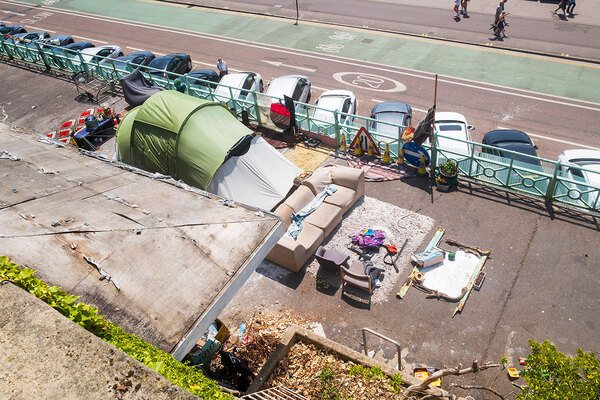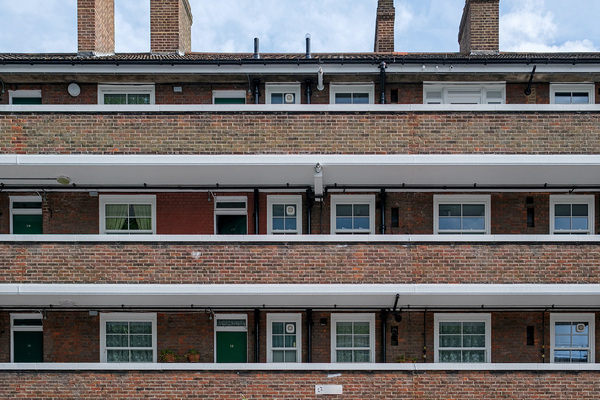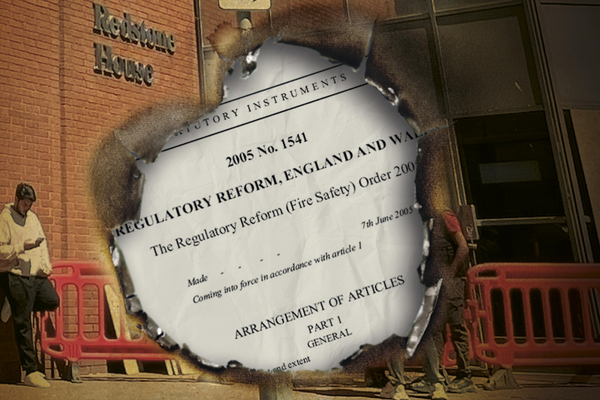You are viewing 1 of your 1 free articles
Ombudsman names 12 landlords in anti-social behaviour report
The Housing Ombudsman has highlighted 12 landlords for poor handling of anti-social behaviour (ASB) cases.
The cases were detailed in its latest Learning from severe maladministration report, which focuses on how landlords have handled ASB complaints. The ombudsman said the failings showed the “significant human impact” of ASB.
In one case, the watchdog found that Hackney Council failed to deal effectively with alleged race-specific graffiti.
According to the report, the council’s actions “made the situation worse by failing to attempt any interpreting services, with English not being this resident’s first language”.
It failed to respond in good time to reports of the graffiti and “did not consider the risk of harm to the resident or family”.
“When a social worker raised concerns about the youngest child in the household, there’s no evidence this was passed on. Nor did we see evidence the case was passed to the ASB panel, or a safeguarding referral was carried out,” the report said.
In response, the council said it had reviewed and amended policies and procedures following the case and these now sped up the sharing of information. It also provided training to all ASB officers to ensure procedures were followed accurately.
In another case, the Guinness Partnership housing association failed to deal with an ASB and noise case for nearly two years. This led to the resident feeling suicidal and having to leave her home.
The resident reported the issues – excessive banging, drug use and fights – multiple times over the two years. Guinness noted she was getting more distressed on each call.
However, its risk assessment classed the case as low risk with no health consequences. A later letter from the resident’s GP asked the landlord to review this urgently. Guinness also received an email from the resident’s employer about her welfare.
According to the report: “The landlord failed to act against the neighbour, including even informal or formal warnings. This led to the police not taking any further action.”
It took Guinness 22 months to repair the doors that were causing much of the noise. In the end, the resident said the repairs did not resolve the situation and she moved out.
Following the case, Guinness said it had created new policies and training programmes. It also restructured its ASB service fully, introducing new safe-neighbourhood roles with an increased local presence.
In another case, Sanctuary failed to replace broken windows for 14 months. The damage was caused by someone throwing a brick through a resident’s window.
According to the report, it took the housing association 75 working days to contact the resident about the issue. The ombudsman said there was “no evidence” to show the landlord carried out a risk assessment.
“It also did not signpost the resident to the police. Following this, the resident was attacked in his own home.
“The police immediately contacted the landlord to move the resident. But the landlord did not contact him until 47 working days later despite the safety implications for not doing so,” the watchdog said.
Sanctuary said it had since revised and updated its ASB-related policies and made advances in the way it tracks, records and measures ASB.
“This has been coupled with additional training and support for the teams who deal with ASB on the frontline,” the report said.
The full report, with the names of the 12 landlords, can be found here.
In a few cases, residents ended their tenancies after poor ASB handling, losing a home which was “meant to be safe and secure”, the watchdog said.
The report highlights seven areas the ombudsman was seeing in severe maladministration in ASB. These include hate incidents and noise, as well as the use of risk assessments and action plans, alongside the relationship between ASB and repairs. As a result of the findings, the watchdog encouraged providers to focus on hate incidents.
Richard Blakeway, the housing ombudsman, said: “Like all tenures, ASB can happen. But because social tenants can move less easily, the importance of good neighbourhood management is even greater.
“This ensures the benefits of building strong roots in communities through longer tenancies does not tip into feeling trapped when there is ASB.
“This report asks why we repeatedly see similar failings. It provides an opportunity for landlords to reflect on the fundamentals of ASB: what is their role, how to manage expectations, and where to work with others.
“It offers three questions for landlords to consider. What do hate incidents mean for social landlords? How to coordinate repairs and ASB-handling more effectively? And what does good complaint-handling look like in an ASB case?
“I have met with some inspirational practitioners working on ASB since our last severe maladministration report.
“Their openness around learning lessons and absence of defensiveness are positive. We also find fewer service failings in ASB cases than in other areas.
“Given the challenges and individual nature of each case, this is a considerable achievement. Landlords continuing to take lessons from our casework will benefit from seeing further improvements.”
Sign up for our asset management and sustainability newsletter
Already have an account? Click here to manage your newsletters
Latest stories












